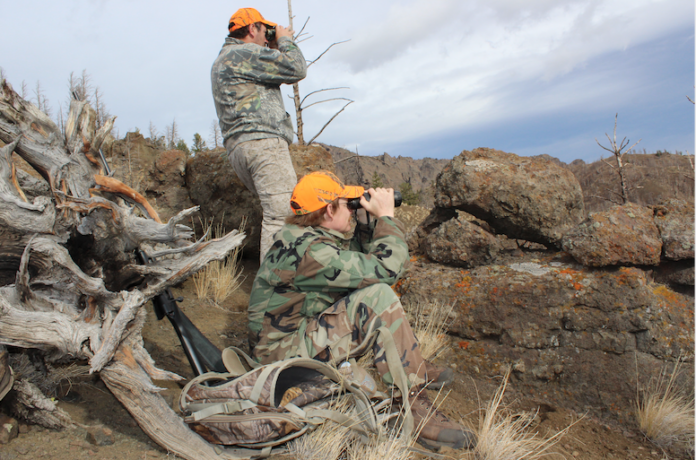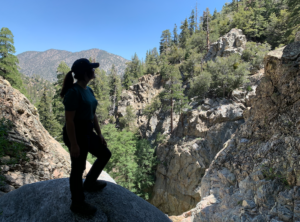
BY TIM HOVEY
Nothing cements a hunting memory in my mind better than a successful spot-and-stalk hunt on any big game animal. While I’ve certainly had several amazing hunts in my outdoor career, one of the most incredible hunts for me occurred on an out-of-state deer hunt with my daughters.
When it comes to spot and stalk, there are several steps that should always be considered if you want to be successful. As I look back and dissect some of these hunts, it becomes clear to me that they all have a few things in common.
1 Spotting the animal
The first major objective in a spot-and-stalk hunt is to spot the animal you’re after. When it comes to glassing for game, I like to find high ground with a good vantage point. To maximize my efforts in the field, I always look for areas that provide a lot of glassing opportunities. Honestly, the more area you can glass from one spot, the better. At this stage of the hunt I’m already familiar with the habitat of the animal I’m hunting, and I will concentrate my searching efforts in this type of terrain.
Using quality binoculars to glass is an absolute must, especially when you may be searching for hours. You can’t hunt what you can’t see and bringing cheap or lower magnification binoculars is a waste of time. Leave the free pair that you get when you sign up for a subscription to Outdoor Life at home. Buy the best you can afford and they will prove to be money well spent.
2 Check the wind
Once your target animal is spotted, it’s time to formulate a plan of approach. The first thing any hunter will want to check is the wind direction. Most game animals will bed up so their noses and eyes are into the wind so they can detect danger. Check the wind at your glassing location and then get back on the binoculars and see what direction its moving where you’ve spotted the animal. Frequently wind directions are different at varying elevations. The wind direction will dictate how you approach. Staying downwind of the animal should keep your scent from alarming them and will hide some slight sounds of your approach.
3 Examine the terrain
I’ve been on dozens of stalks that were brutal when it came to terrain. In a few situations, the target animal had placed themselves in a spot that was almost impossible to get close to. This is the reason it’s important to not only plan an approach path, but to establish a secondary route as well.
I like to use the natural terrain to hide my approach. Hills, drainages and vegetation can easily hide approaching hunters. Using the wind as an initial guide and keeping the wind in my face, I’ll work out a plan to get close to the animal. I will also pick out a spotIcanusetosetupforashot as well.

4 Get close undetected
Once you’ve spotted the animal, checked the wind and plan your approach, it’s time to get moving. In my opinion, the actual stalk is where many mistakes can be made. Despite your distance from the animal, keep noise to a minimum. All game animals have big ears for a reason. Travel silently and try to make your way making as little noise as possible.
On many occasions, I’ve used the running water in drainages to hide not only the noise of my approach, but my scent. Moving water will create a slight air current traveling in the same direction the water is flowing. If I can use a running stream or creek during a stalk, I will.
5 Making the shot
Getting into range is different for every hunter. Some feel more comfortable at greater distances than others. My entire goal when I stalk an animal is to get as close as the terrain and the animal will allow. I’ll even reevaluate once I get close to see if I can identify a better or closer spot to take the shot.
Once I’m ready, I’ll set up my shooting sticks, get comfortable and pick my shot. At times, I’ve had to wait for the animal to get up or move into a better position. Either way, the name of this end game is patience. When the time is right, you need to remain calm, place the crosshairs where they need to be and squeeze the trigger.
I’ve had a number of spot-and-stalk hunts that for one rea- son or another didn’t work out. Either the animal moved while we were on the stalk, the terrain was too tough for a close approach or the wind changed and spooked the game. However, when it all comes together and you make the shot, planning and participating in a successful spot and stalk is one of the best feelings a hunter can have.



